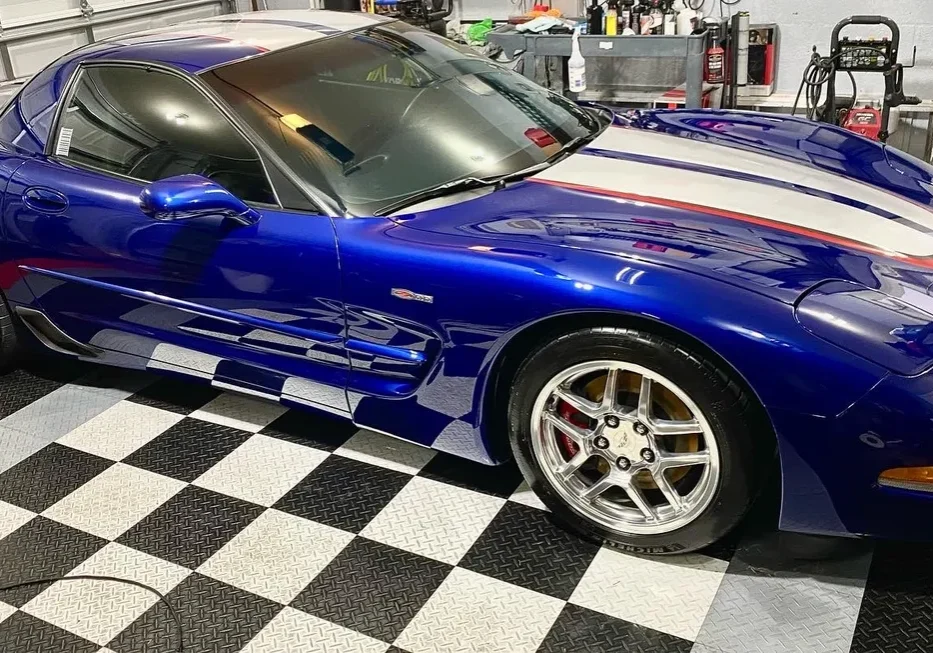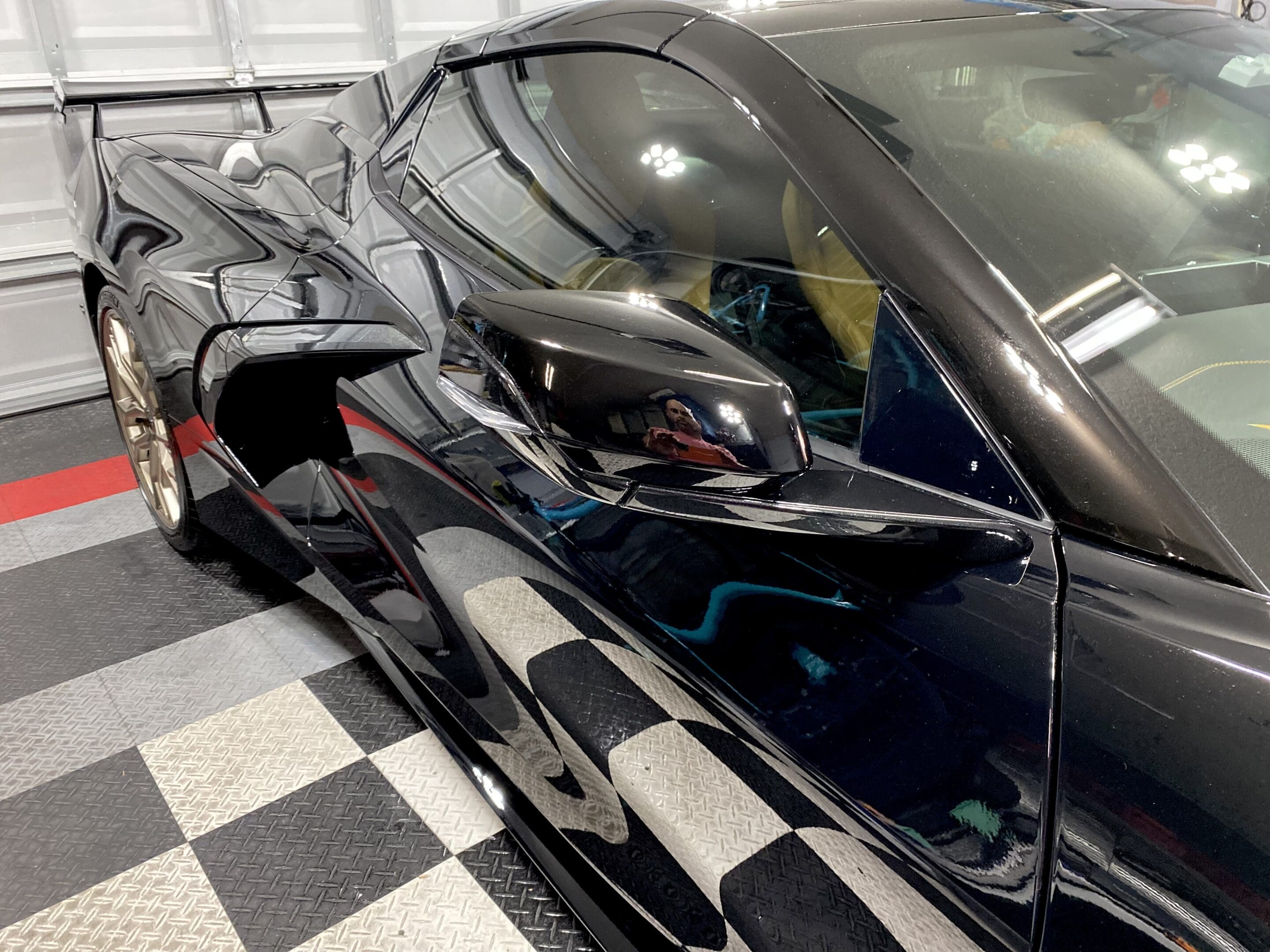Boost Your Ride's Charm With Automotive Detailing Services Like Self-Healing Ceramic Coatings, Paint Correction, and More
Trusted Automotive Detailing Care in Odessa Florida
Experience the pinnacle of automotive care and attention to detail at Pristine Perfection Detailing. Certified with the International Detailing Association (IDA SV/CD), I am committed to elevating your vehicle’s look, while safeguarding its worth. Find the ultimate automotive paint protection through state-of-the-art ceramic coatings and Paint Protection Film (PPF). Leave your vehicle in the hands of a trusted professional to bring out unmatched brilliance and secure its lasting beauty.
Comprehensive Services
At Pristine Perfection Detailing, I offer a comprehensive range of services tailored to meet the needs of even the most discerning vehicle owners:


Local Communities Served
Pristine Perfection Detailing proudly serves areas across:
Frequently Asked Questions
It is a multi-step process that includes:
Paint Inspection - Assessing the condition of the paint to identify imperfections.
Chemical Decontamination - Entire vehicle is sprayed down with a powerful solution to remove embedded ferrous metal particles in your clear coat.
Mechanical Decontamination -Removing embedded above surface contaminants such road grime, airborne pollutants and industrial fallout. This is also referred to as "claying" a vehicle.
Machine Polishing - Using specialized equipment and polishing compounds to gently remove imperfections. My polishing contains NO FILLERS. This means there is nothing to hide imperfections.
Protecting - Applying sealants, ceramic coatings, or paint protection film to protect and enhance the paint.
*** Paint Corrections should only be performed by a trained professional. It is never a one size fits all approach. Every vehicle is different, and clear coats vary in "hardness". Having a solid understanding on how to approach any vehicle is paramount to obtaining the best possible results.
Paint decontamination is a process that involves cleaning and restoring the surface of your vehicle to remove contaminants and imperfections that can affect its appearance and longevity. Here are some of the key benefits:
-
Improved Appearance: Decontamination removes pollutants like tar, sap, industrial fallout, and other surface impurities that can dull the paint. This helps in restoring a glossy, shiny finish.
-
Enhanced Paint Protection: By removing contaminants, you ensure that any waxes, sealants, or ceramic coatings applied afterward adhere better and last longer. This creates a more effective barrier against future environmental damage.
-
Prevention of Paint Damage: Contaminants like iron particles can embed themselves into the paint and cause rusting or etching over time. Decontamination helps prevent these issues, extending the life of your paintwork.
-
Smoother Surface: The process usually involves clay barring, which makes the surface feel smooth and eliminates gritty textures. This makes any subsequent polishing or waxing more effective.
-
Easier Maintenance: A clean, decontaminated surface is easier to maintain. Future washes will be more effective and less likely to cause damage to the paint.
-
Increased Resale Value: A well-maintained and decontaminated paint job can significantly increase the resale value of your vehicle, as it indicates that the car has been well cared for.
-
Preparation for Detailing: If you’re planning to have your car detailed, decontamination is a crucial first step. It ensures that the detailing products can perform their best and achieve the desired results.
Ceramic coatings have become quite popular in the automotive and home maintenance worlds due to their numerous benefits. Here’s a rundown of why they’re so valued:
-
Durability: Ceramic coatings provide a hard, protective layer on surfaces. For cars, this means enhanced protection against scratches, minor abrasions, and other physical damage.
-
Enhanced Protection: They offer excellent resistance to environmental contaminants like acid rain, bird droppings, and tree sap, which can damage or degrade the surface over time.
-
Hydrophobic Properties: Ceramic coatings repel water and make surfaces more resistant to staining. This is particularly useful for cars, as it helps keep them cleaner for longer and makes washing them easier.
-
UV Protection: They shield surfaces from harmful UV rays, which can cause fading and deterioration over time. This is especially beneficial for vehicles and outdoor surfaces.
-
Ease of Cleaning: The smooth surface created by a ceramic coating makes it much easier to clean. Dirt and grime have a harder time sticking, so a simple wash can often suffice.
-
Enhanced Appearance: Ceramic coatings can enhance the gloss and depth of the paint or surface, giving it a showroom-like finish.
-
Cost-Effective Long-Term: While the initial application can be pricey, the longevity and protection provided by ceramic coatings can save money on maintenance and repairs over time.
-
Resistance to Chemicals: They can protect surfaces from harsh chemicals and cleaners that might otherwise cause damage.
-
Temperature Resistance: Many ceramic coatings can withstand high temperatures, which is useful for surfaces exposed to heat, like wheels.
Paint Protection Film (PPF) is a clear, durable film applied to the exterior surfaces of a vehicle to protect the paint from damage. It is made from a thermoplastic urethane material, which provides a tough, resilient layer that can absorb impacts and resist scratches, chips, and stains.
Here are some key features of Paint Protection Film:
-
Protection: PPF shields your vehicle's paint from stone chips, road debris, and minor abrasions. It also offers some protection against environmental factors like UV rays, which can cause paint to fade over time.
-
Self-Healing: Many modern PPFs have self-healing properties. Minor scratches and swirl marks on the film can disappear over time or with the application of heat from the sun or a heat gun.
-
Clarity: The film is transparent and designed to be nearly invisible when applied correctly. It allows the original paint color and finish to show through without altering the appearance of your vehicle.
-
Maintenance: PPF is relatively low-maintenance. Regular washing is usually sufficient to keep it looking good. It does not require any special cleaners or treatments.
-
Durability: High-quality PPFs are designed to last for several years, providing long-term protection. They can also be removed without damaging the underlying paint if necessary.
PPF is often applied to high-impact areas of a vehicle, such as the hood, fenders, side mirrors, and bumper, but it can be applied to any part of the car to offer comprehensive protection.
Yes. For jobs that require extensive paint correction, or any ceramic coating install, plan to leave the vehicle with me overnight.
For Paint Protection Film (PPF), plan anywhere from 3-6 days.
No, not all car paint systems are the same. Car paint systems can vary widely depending on the type of paint used, the application method, and the specific requirements of the vehicle manufacturer. Here’s a breakdown of some key differences:
-
Types of Paint Systems:
- Single-Stage Paint: This is a paint system where the color and the gloss are combined in one layer. It’s often used for its simplicity and is more common in older or more affordable vehicles.
- Base Coat/Clear Coat: This is a two-stage system where a base coat provides the color, and a clear coat is applied on top to provide gloss and protection. This system is more common in modern vehicles and provides better durability and shine.
- Matte or Satin Finishes: These are special finishes that don’t have the high gloss of traditional clear coats. They require specific care and maintenance to preserve their appearance.
- Hardness: The level of clearcoat hardness can vary greatly from manufacturer to manufacturer. Some clearcoats will scratch easily, while others are more difficult.
When it comes to paint correction, it’s generally a good idea to aim for the best possible finish, but it’s not always necessary to get every single scratch out. Here’s why:
-
Severity of the Scratch: Some scratches are so deep that they may not be fully removable without risking damage to the paint. If the scratch is too deep, it might require more extensive treatment or even repainting.
-
Paint Thickness: Paint correction involves removing a layer of clear coat to smooth out imperfections. If the paint is already thin, removing too much material could lead to issues. Always check the thickness of the paint before proceeding.
-
Cost vs. Benefit: Extensive correction work can be time-consuming and expensive. Consider whether the results are worth the cost. Sometimes, a high level of correction isn’t necessary if the car looks good and the imperfections aren’t too noticeable.
Yes, you can put a ceramic coating on top of paint protection film (PPF). In fact, many people do this to enhance the benefits of both products. The ceramic coating can add an extra layer of protection and enhance the hydrophobic properties of the PPF, making your car’s surface even easier to clean and maintain. It can also provide additional gloss and help with UV protection.
Yes, you can take a ceramic-coated car through a tunnel wash, BUT there are a few things to keep in mind to ensure the longevity and effectiveness of the coating.
While many ceramic coatings are designed to withstand various cleaning methods, hand washing with a pH-neutral shampoo and microfiber mitts is generally the safest way to maintain the coating’s integrity. If you do choose a tunnel wash, make sure it’s a quality service to minimize any potential damage.
-
Type of Tunnel Wash: Opt for a tunnel wash that uses soft, non-abrasive brushes and high-quality cleaning agents. Brushes and harsh chemicals can damage the ceramic coating over time.
-
Avoid High Pressure: Some tunnel washes use high-pressure water jets that might be too harsh for the coating. While ceramic coatings are durable, very high pressure can potentially compromise the coating.
-
Inspect the Coating: Regularly check the condition of the ceramic coating. Even though ceramic coatings are highly resistant, it's good practice to inspect them for any signs of degradation after using any type of automatic car wash.
-
Follow Manufacturer Guidelines: Check the guidelines provided by the ceramic coating manufacturer. They might have specific recommendations or restrictions for car washes.
** Google Customer Reviews **

Revitalize Your Ride Today
Transform your vehicle with Pristine Perfection Detailing’s exceptional services. From Westchase to Tarpon Springs, experience the brilliance of Ceramic Coatings and Paint Protection Film. Schedule your detailing session now!
Revitalize Your Ride Today
Transform your vehicle with Pristine Perfection Detailing’s exceptional services. From Westchase to Tarpon Springs, experience the brilliance of Ceramic Coatings and Paint Protection Film. Schedule your detailing session now!


